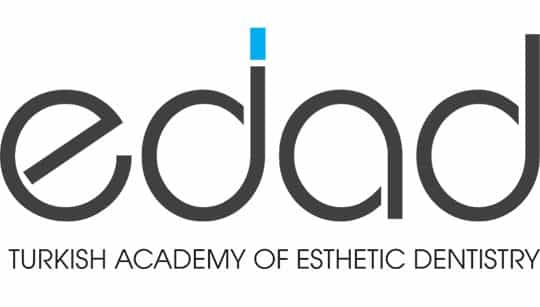Smile Lines (Nasolabial folds)
Smile lines are creases in your skin extending from both sides of your nose to the corners of your mouth. They’re also called nasolabial folds. The creases can become prominent and permanent as you age, especially if you smoke or don’t protect your skin from the sun. Certain treatments can reduce their appearance.
Smile lines, also known as laugh lines, are a natural part of aging, but most people don’t like having fine lines and wrinkles around their mouth and eyes broadcasting their age, especially when they feel young at heart. And most people also don’t want to undergo a painful surgery with lots of downtime to recover the look of their youth. The good news is, you don’t have to — there are numerous other options available.
What causes smile lines?
Aging: As you age, your cheekbones can flatten, and gravity can pull down loose skin in the area. You also have less collagen and elastin in your skin. These natural substances give skin its elasticity, resilience, stretchiness and ability to hold its original shape and decrease in the amount of them results in smile lines.
Smoking: Smoking destroys collagen and elastin in your skin which means smile lines become visible earlier.
Sun damage: The sun’s rays also break down collagen and elastin.
Weight loss or gain: If you lose a lot of weight, you may have extra, looser skin. If you gain weight, you may have bigger cheeks. Both situations can accentuate nasolabial folds.
Symptoms Of Smile Lines
(Smile Lines) Nasolabial folds, which extend from the corners of your lips to the bottom of your nose, might make you appear older than you actually are. We can assist if you are bothered by your smile lines.
Smile Lines that extend from the corners of your mouth to your chin are called parenthesis. When you’re young, they don’t show, but as you age, they begin to deepen and can completely take over your face. It’s crucial to fill them out in advance! Parentheses lines can be removed with the aid of dermal fillers. Additionally, a facelift, laser, or radiofrequency energy can be used to treat them.
Smoking causes vertical creases above your upper lip. It is a proven truth that smoking, especially in women, accelerates the development of vertical lip creases. Smoker’s lines are vertical lines that run above your top lip.
What alternatives to surgery are there for treating smile lines?
There are numerous nonsurgical methods available to minimize smile lines, including:
OTC Lotions
Any pharmacy will sell anti-wrinkle creams, the majority of which contain retinol, which is supposed to combat the free radicals that cause wrinkles. In a study that was published in the Archives of Dermatology, participants who applied 0.4 percent retinol lotion three times per week for six months saw a significant improvement in their condition.
The drawback of creams is that they can take months to work and don’t give permanent benefits, despite the reasonable cost. They can also cause rashes, burning, and redness as adverse effects.
Neurotoxins
Products containing botulinum toxin, such as Botox® and Dysport®, which are derived from the same bacteria that causes food poisoning, were initially FDA-approved for cosmetic use in April 2002 and have since grown to be the most popular nonsurgical wrinkle treatments (including smile lines) in the United States. In only the previous year, more than 1.5 million people received Botox treatments, according to Newsweek magazine.
Botox and Dysport temporarily paralyze and stop the contraction of muscles when injected into them. Without contractions, the area above the muscle relaxes and appears smoother since contractions cause skin to wrinkle. The effects of the injections begin to show within a week and last for around three months, after which you will need another dose to keep up your appearance.
Dermal fillers
Dermal fillers provide volume to lined, sagging skin to give it a smoother appearance. Many are created from hyaluronic acid, a chemical your body naturally produces, including Juvéderm® and Restylane®. Therefore, hyaluronic acid replaces lost volume in a very natural-looking manner. Additionally, it can define and shape features as necessary. Each Juvéderm formulation is designed to target a particular set of lines and wrinkles. The results of the fillers, which are injected near the nasolabial crease to assist reduce smile lines, are apparent right away.
Using platelet-rich plasma (PRP) and microneedling
By inflicting microscopic wounds on your skin with tiny needles known as microneedling, the subdermal cells in your skin begin producing collagen and elastin. These proteins add youthful volume to your skin by toning and firming it.
Even though microneedling is a potent treatment on its own, adding platelet-rich plasma can improve the advantages (PRP). The physician draws blood from your arm and separates the platelets, which are cells that contain a variety of growth factors. When combined with microneedling, these growth factors boost collagen synthesis and skin healing even more.
Can I do anything at home to help reduce smile lines?
Try this daily exercise at home to reduce the appearance of smile lines around your mouth:
- Separate your lips a little.
- Use your fingers to pull the corners of the mouth backward toward your neck.
- Pull back, keeping the lips parallel.
- Hold for 10 seconds.
- Relax and release your skin.
- Repeat this 10 to 25 times.
What is Gum Line (Gummy Smile)?
The “excessive” in excessive gingival display is typically quantified as anything more than 4 mm of gums visible above your upper teeth when smiling, either localized to a few teeth or generalized across the entire smile. This condition is more common among women than men, especially those in their 20s and 30s, and its incidence decreases with age.
What Can Cause a Gummy Smile?
Many different things can result in a gummy smile. Others are a result of how we care for our teeth, and there are undoubtedly some things we can do to prevent that from happening. Some are ingrained in our genetics, and there isn’t much we can do to prevent those from ruining our smiles. Let’s examine the three most frequent reasons for a gummy smile.
Poor Bite
A terrible bite is one of those annoying genetic factors that can result in a gummy smile. Your dentist in Mount Pleasant refers to this condition as a poor bite when your upper jaw is out of position relative to your bottom jaw. A poor bite can result in a variety of issues, including misaligned teeth, gum disease, and jaw pain. A gummy appearance is sometimes the result of an improper bite that causes the upper jaw to extend outward more than it should.
Extra Gum Tissue
Having too much gum tissue is perhaps the most frequent cause of a gummy smile. Sometimes there is an overgrowth of gum tissue that covers too much of the teeth during the eruption of permanent teeth. The appearance will be sticky as a result. However, a gum infection might give the impression that there is an excessive amount of gum tissue when, in reality, the infection generated swelling that covers an excessive amount of the teeth. By brushing, flossing, and visiting your dentist in Mount Pleasant twice a year for professional cleanings, you can avoid this cause of a gummy grin.
Activated Upper Lip
Another hereditary factor that contributes to gummy grins is a condition known as a hyperactive upper lip. When the muscles in the top lip and underneath the nose are, well, hyperactive, it results in a hyperactive lip. The top lip may lift and reveal gum tissue as a result of the frequent misuse of those muscles.
Ways to fix a gummy smile
In order to have a beautiful smilehttps://istanbuldentalclinics.com/orthodontic-treatment/, regarding smile lines, there are many ways to correct a gummy smile. But the right choice of treatment for you depends on the primary cause of the problem. Six treatment options include:
1. Orthodontic Treatment: A gummy grin can also be treated with orthodontics, particularly if the faulty bite is to blame. A bite can be adjusted into its proper position and the amount of gum tissue that is visible when smiling, laughing, or talking can be decreased with the aid of braces or even clear aligners like Invisalign or ClearCorrect. Additionally, employing orthodontics to correct a poor bite can ease other dental issues like jaw pain.
2. Veneers or crowns
3. Crown-lengthening surgery: The best course of action may be a gum lift or crown lengthening if the reason of a gummy grin is simply too much gum tissue covering the teeth. The gum line is raised during a gum lift operation to show off more pearly whites by effectively removing some of the gum tissue from around the teeth. A crown lengthening procedure, which modifies the gums’ structure as well as the bone around the teeth, may be advised by your dentist if there is an excessive amount of gum tissue.
4. Lip surgery: The top and bottom of the upper lip are stitched together after a little portion of the gum tissue beneath it is removed, giving the lip the appearance of being shorter. Because of this shorter lip, the top lip will be unable to rise as high as it once did, failing to cover the gums and lessen the look of a gummy smile.
5. Laser gum contouring: Using special dental lasers, your dentist can help remove the extra gum tissue. This means you won’t have to undergo surgery to get the same results.
6. Gingivectomy: Some people have too much gum tissue, which can be the reason for their gummy smile. If so, you may be able to have a gingivectomy, in which the extra gum tissue is cut out and the remaining tissue is sculpted to reveal more of your teeth.
Visible Crown Margin
The margin of a restoration designates where the restoration ends and the surrounding tooth tissue begins. This is a crucial location, and the restoration that is produced can be both like-like and long-lasting when meticulous tooth preparation is paired with an understanding of the technician’s demands in terms of the physical requirements and limitations of the chosen restorative material.
The tooth/restoration interface represents a key clinical weak point due to the fact that crown margins are all too frequently far from adequate for the following reasons:
• Any marginal irregularities disturb the smoothness of tooth surfaces, making the area susceptible to plaque buildup, while microleakage at the margin allows ions, molecules, fluids, or bacteria to move between the prepared tooth and the restorative material.
• In the case of tooth-colored restorations, visible margins frequently reduce the overall cosmetic result by drawing attention to relative disparities in the restorative material’s shade, translucency, and surface polish, as well as the adjacent tooth structure. Staining of the connection over time frequently makes this worse.
• Depending on the material chosen and the stresses acting on the edge, the restoration is frequently at its thinnest and hence most susceptible to collapse in this area.
Crown Lenghtening
Crown lengthening is a procedure to address an excessive gingival display, otherwise known as a gummy smile. It is also defined as the removal of bone tissue with concomitant removal or repositioning of the soft tissue around the tooth.
Dentists may perform crown lengthening procedures to:
- address cosmetic concerns
- expose cavities beneath the gumline
- expose fractured areas of tooth
- expose more tooth structure before they can fit a device such as a bridge
Recovery of Crown Lengthening
The type of procedure can affect recovery, and the dentist who did it will provide specific advice.
In order to make crown lengthening treatment painless for the patient, the area is numbed. However, as the anesthesia wears off, the patient could feel uncomfortable or in pain.
For pain and inflammation relief following the procedure, some people need anti-inflammatory drugs such acetaminophen or ibuprofen.
Causes of Black Gum
Melanin: The pigment melanin, which gives the skin, hair, and eyes their color, is produced by the body naturally. A person’s hair, skin, or eyes will be darker the more melanin they have in their bodies.
A person’s body may produce more melanin if their gums are dark brown or black. If a person has always had very dark gums, there is no reason to be alarmed. However, if the gum color changes quickly or if black patches occur on the gums, it is probably not due to melanin and could be a sign of a medical problem.
There are some other reasons for dark colored gums, including;
- Poor oral hygiene,
- Hereditary or race factors
- Smoking
- Medication
- Amalgam tattoo
- Acute necrotizing ulcerative gingivitis
- Addison’s disease
- Peutz-Jeghers syndrome
These deviations, illnesses, defects; all mentioned above are the factors distrupting the smile and all can be treated with smile design. Smile design is a cosmetic dental procedure that corrects teeth imperfections and restores your dental health and appearance. It involves a customized treatment and long-lasting results for a straighter, whiter, and natural-looking smile. In order to have a succesful results with your oral surgery and/or treatments, you should consult your dentist. To have an opinion about the procedures needed and the period of treatment, get a quote from Istanbul Dental!













